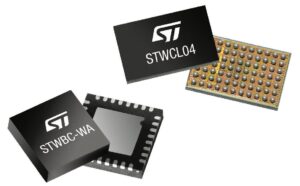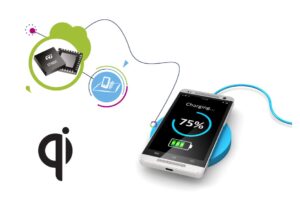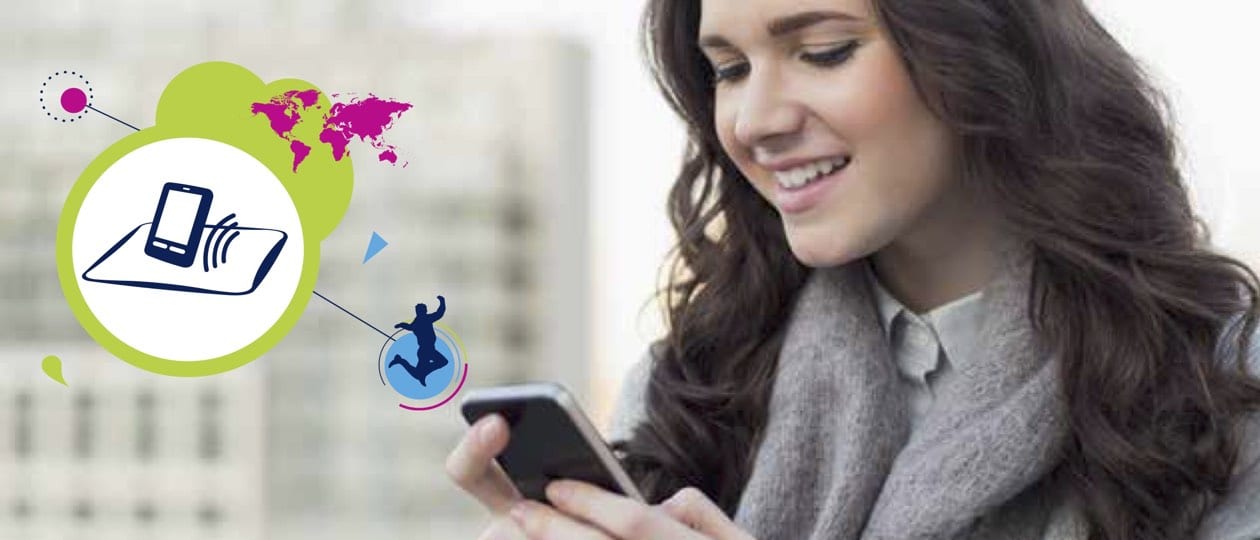Wireless battery charging hasn’t only become an indispensable feature for a lot of consumer products, it constitutes one of the greatest technological potentials of our time, which is why it will be an important topic at ST’s Developers Conference 2017 that will take place on September 6 in Santa Clara, California. After all, the range of products that benefit from this technology is quickly expanding, making it increasingly popular. What was once limited to electric toothbrushes is now in smartwatches, and smartphones, but laptops are also just around the corner, while cars are next on the list. Since wireless charging should be a 22.25 billion dollar industry in 2022, according to Grand View Research, most manufacturers and engineering teams are no longer asking if it is coming to their products, but when.

ST made big waves when it announced a collaboration with WiTricity at last year’s Developers Conference. The audience got to see a technology that was more practical, allowing for greater space between the battery and the charger, and people witnessed the beginnings of a system that could power electric vehicles. Since then, the Life.Augmented blog dug deeper into some of the solutions that have made wireless charging for wearables flexible, efficient, and easy, such as the STWBC-WA transmitter, the STWLC04 receiver, and the STEVAL-ISB038V1 evaluation board. To know more about the topic and the presentation of this year’s conference, we sat down with Paolo Battezzato, Application Engineering Manager at STMicroelectronics, and the presenter in the video at the end of this post.
Wireless Battery Charging: Two Major Standards
As Mr. Battezzato explained, wireless charging solutions work around standards that dictate how a system behaves, which means understanding them is of the utmost importance. Qi is currently the most popular one since it’s the most common in mobile devices. It is an open standard from the Wireless Power Consortium (WPC), and ST is part of its Steering Group. Qi 1.2, the latest major release, added the ability to transmit 15 W of power so mobile devices could benefit from fast charging solutions. However, as wireless charging has been coming to devices found outside of Qi’s current 15 W scope, like laptops or electric cars, the AirFuel Alliance, the other major consortium in the market, has gained traction. Not surprisingly, ST is also a member of this consortium, which currently governs the implementation of WiTricity’s systems.
Contrary to popular beliefs, these standards and consortiums aren’t necessarily competitors but can be seen as complementary because they both use slightly different approaches to satisfy different use cases. Both Qi and AirFuel transfer power using a magnetic field. In a nutshell, the charger sends a current to one or more coils to generate a magnetic field, which will be picked up by the coil of the charging device and converted back into a current to charge its battery. Obviously, each standard adopts different sets of protocols and hardware implementations. For instance, Qi relies on a half-bridge or full-bridge inverter to energize the transmitting coil, while AirFuel uses a power amplifier. They also handle FOD (Foreign Object Detection) differently.
Magnetic Induction vs. Magnetic Resonance

However, as Mr. Battezzato highlights, the main difference between the two resides in the fact that Qi uses magnetic induction, while AirFuel relies on magnetic resonance. In the former, the transmitting and receiving coils must be in a precise alignment and close to one another. This isn’t a problem for smartphones or smartwatches since customers attach their device to the charger provided by the manufacturer anyway, and this constraint greatly improves efficiency.
On the other hand, AirFuel uses magnetic resonance, meaning that the resonant frequency of the coil in the charger and the device are tuned to be identical. As a result, the technology is less “tethered” since the coils don’t need to be so perfectly aligned and it’s possible to have a greater distance between the two. However, the further apart they are, the more efficiency decreases. The two standards also define operations at different frequencies: 110 kHz to 205 kHz for Qi, and 6.78 MHz for AirFuel. Furthermore, Qi uses in-band communication through the coils to initiate and monitor power transfer, while AirFuel relies on a separate Bluetooth link.
ST is a member of both consortium because what matters is to be all things to all people. No matter the technological needs and the standards that make the most sense for a product, its solutions are there to move teams and customers further. For example, one solution announced at last year’s ST Developers Conference will not only support magnetic resonance as defined by AirFuel’s specification but will also be compatible with magnetic induction charging, as set by the Qi standard. Ultimately, the point is to provide flexible components that can address all the corners of the market.
Better FOD Thanks to ST
This is a perfect example of what it means to augment lives for engineers, decision makers, and customers. Fulfilling the basic demands of a standard is not enough. Hence, ST’s components offer multi-modes as well as one of the most powerful and effective implementations of FOD in the industry. Qi devices use a Foreign Object Detection system that relies on the balance of power. As the transfer of power occurs, the receiver reports how much it is receiving from the transmitter, and the transmitter determines how much power the receiver requires based on the coupling, distance, etc. If there’s an important mismatch between the two, the system can safely assume that there’s a foreign object that could potentially damage the system if the charger tries to send power to it.
The challenge is making sure that the FOD is not overly aggressive, which would reject appropriate devices. Inversely a loose FOD would not detect a foreign object, which could potentially lead to serious damages. ST’s FOD shines thanks to its firmware implementation, which makes it one of the most effective solutions in the industry. In other words, its algorithms manage to offer great performance; far beyond all expectations.
There’s So Much More to Talk About
There’s a lot more to talk about and learn from the lecture Wireless Battery Charging by Paolo Battezzato at the ST Developers Conference 2017. There will also be fascinating demos, like the one previously shown at APEC 2017, which explains how a phone can either be wirelessly charged or become a charger for a smartwatch, thanks to an ST component that acts as both receiver and transmitter (see video below). To make the most out of the presentation, we also invite attendees to check out the technical documentation found on the WPC and the AirFuel websites.
